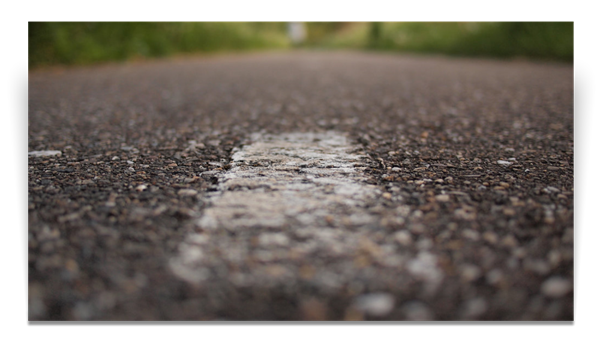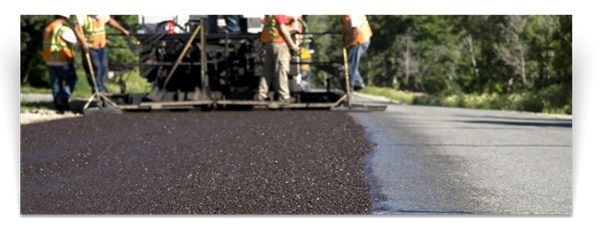by
DingXin Cheng, Ph.D., P.E.
| Nov 08, 2016
Americans are accustomed to easy mobility on safe, smooth, and well maintained roads and streets. These roads and streets play a critical role in the nation’s economy providing opportunities for agriculture, industry, commerce, and recreation. Unfortunately, many of our roadway networks are deteriorating in quality requiring better management of our assets. This blog discusses the benefits of pavement preservation and importance of integrating it into pavement management systems.

Benefits of Pavement Preservation
According to the FHWA’s memo on February 25, 2016, pavement preservation consists of work that is planned and performed to improve or sustain the condition of the transportation facility in a state of good repair. Preservation activities generally do not add capacity or structural value, but do restore the overall condition of the transportation facility.
Pavement preservation is similar in concept to conducting regular maintenance on an automobile or a house to keep them in good condition. For example, a low-cost maintenance activity such as routinely changing the motor oil in an automobile can improve the likelihood that the engine will not require a major overhaul. Similarly, paying for minor work now to prevent major work in the future is an important concept of pavement preservation.
The most significant benefits of pavement preservation include the following: (1) life extension of the existing pavements, (2) lower treatment costs, (3) reduced user costs, (4) improved safety, (5) improved overall network health, and (6) reduced energy consumption and Green House Gas emission.
In the past, many maintenance practices have not been effective, because they were applied reactively to roads in poor condition instead of proactively to roads still in good condition. Succinctly stated, the correct approach to preventive maintenance is to “place the right treatment on the right road at the right time.” They also need to be placed in the right way.
Agencies should integrate pavement preservation into pavement management system
The best practice is to integrate pavement preservation into your pavement management system (PMS). Adding pavement preservation components to PMS can benefit both PMS and pavement preservation program. Some early PMS consisted primarily of a database, a pavement condition index, and a ranking system to develop a prioritized list of projects following the traditional “worst first” approach. Pavement preservation is a proactive approach where pavement preservation treatments are applied at a right time and group together. A pavement management system can support systematic and effective pavement preservation treatment programming. On the other hand, a successful pavement preservation program can support a PMS by providing cost-effective funding allocation and optimized project programming.
As a good example, the MTC’s StreetSaver® program demonstrates the effectiveness of integrating pavement preservation into pavement management system. StreetSaver® is the popular PMS software developed by Metropolitan Transportation Commission (MTC) in the San Francisco Bay Area, California. StreetSaver® provides network-level analysis with some project-level components, supplemented with GIS mapping capability. It was developed in 1984 with a strong emphasis on preventive maintenance. The founding principle of the MTC StreetSaver is making good streets last longer so they cost less to maintain.
Agencies should develop their pavement preservation toolbox and update their treatment decision tree
No treatment will be suitable for every location. For example, a chip seal may be a long-lasting, cost-effective surface treatment in a rural area, but not in an urban area. Conversely, a micro surfacing cap seal may be cost-effective in an urban area, but not in a rural area. performance and cost-effectiveness should be evaluated in the context of the areas in which the preservation treatments are applied.
Agencies should develop and maintain a set of pavement preservation treatments in their toolbox. For example, Table 1 shows the common pavement preservation treatments used by Caltrans.
Table 1 Caltrans Commonly Used Preservation Treatments
| Flexible Pavement |
Rigid Pavement |
| 1. Crack Sealing |
1. Joint Resealing & Crack Sealing |
| 2. Patching & Edge Repair |
2. Diamond Grinding & Grooving |
| 3. Fog and Rejuvenating Seals |
3. Dowel Bar Retrofit |
| 4. Chip Seals |
4. Isolated Partial Depth Concrete Repair |
| 5. Slurry Seals |
5. Full Depth Concrete Repair |
| 6. Micro Surfacing |
|
| 7. Thin Maintenance Overlays |
|
| 8. Bonded Wearing Course |
|
| 9. Interlayers |
|
| 10. In - place Recycling |
|
Other agencies could develop their own pavement preservation toolbox. Under the direction of the MTC, California Pavement Preservation Center (CP2 Center) has worked with Kings county of California to review its pavement treatment strategies and develop a StreetSaver decision tree for the county. Considering the County’s current practice, a number of beneficial pavement preservation treatments were added to its maintenance toolbox. Furthermore, a new pavement treatment decision tree was developed for the County based on pavement preservation principles and cost effectiveness of treatments.

The decision tree is the critical part of a pavement management system. A decision tree recommends pavement treatments based on roadway functional class and existing pavement conditions. In StreetSaver, the functional classes of the StreetSaver include arterials, collectors, and local roads. Generally, an arterial has more traffic than a collector, while a collector has more traffic than a local road. The pavement conditions in StreetSaver are expressed using a Pavement Condition Index (PCI), which is a pavement surface distress composite index. The PCI is ranged from 0 to 100, with 100 representing no distress or brand new pavement surface. A good decision tree will recommend the best treatment for a given functional class (a surrogate of traffic level) and pre-existing PCI values. The decision tree also contains the cost information for each treatment selected. Together, the decision tree will support the PMS to select right treatments on right pavements at right times, and to develop the future maintenance and rehabilitation work as well as budget needs.
Summary
With most of the United States roadway network are already constructed, the major activity has now shifted from new construction to maintaining and preserving existing roads. The potential benefits of a successful pavement preservation program can be numerous. Ideally, we want to preserve our existing highway systems so that they are safer, smoother, and last longer. Pavement preservation is the timely application of carefully selected surface treatments to maintain or extend a pavement's effective service life.
It is very important to integrate pavement preservation into pavement management systems of agencies. PMS can be used as a tool to effectively program preservation treatments for an agency. An effective PMS identifies good candidates for preventive maintenance since it has the roadway distress survey and maintenance history. A pavement preservation component within the PMS can help an agency allocate funding more cost effectively.
It is critical to establish a correct decision tree for a PMS because it can support PMS to prioritize and select projects for right treatment, and estimate budget needs. Although utilizing right pavement preservation treatments and integrating pavement preservation into a PMS system can be a very demanding and challenging job, it is worth the effort!